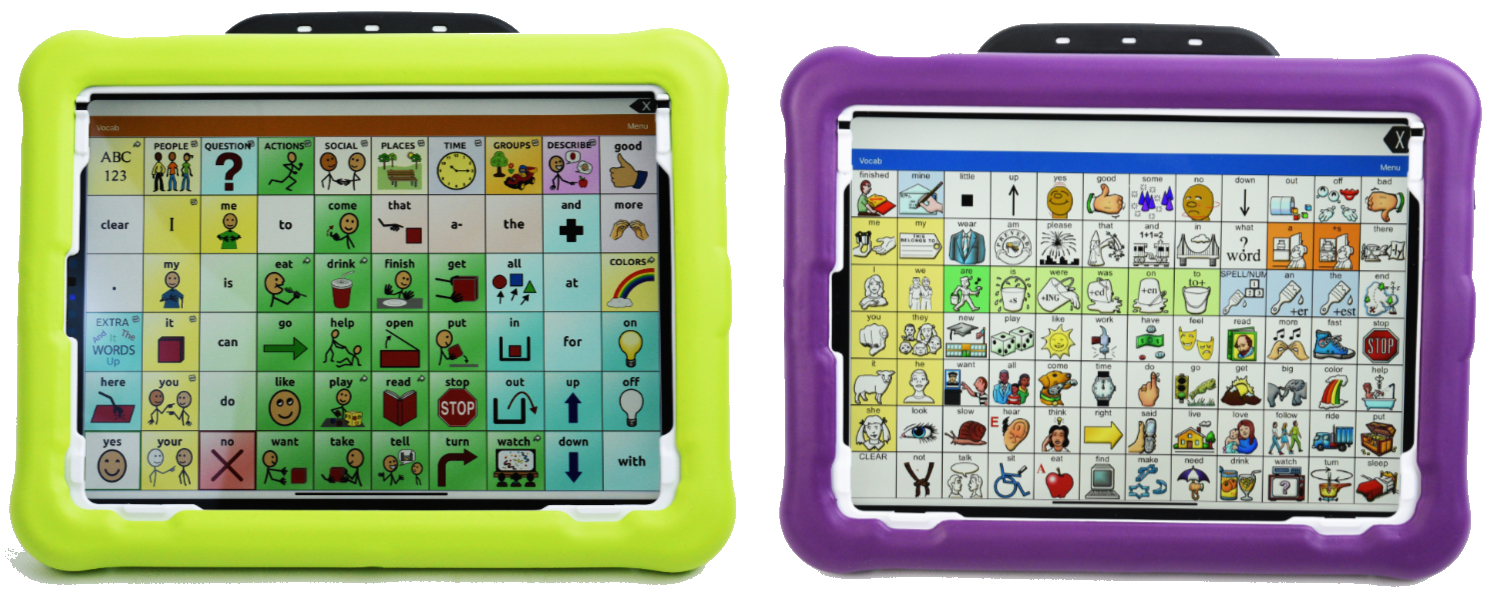

These cards are meant to be a starting point to help people learn how vocabulary is organized on a child’s device. Great! As always, follow the child’s lead and model the language that goes with what they’re interested in. You may find that you want to model different words. The target words are a mixture of core and fringe vocabulary, since kids need to know both. These are typically kids who need support to sustain joint attention and interaction with others. I chose target words that have been useful for keeping the kids on my caseload engaged in play activities. The button sequences take away the fear of looking unknowledgeable that people sometimes have. Play cards are an easy way to support teams that are feeling intimidated/overwhelmed by the thought of learning a child’s AAC system. These play cards are also helpful resources for your kids’ teachers and paras, to use in the classroom. They’re also an easy way to send home functional, do-able homework each week-one play activity per week. Play cards can be included in each box of toys/play materials so they’re easy for paras, therapists, and other play partners to access.įor SLPs: These are good for individual or group therapy sessions, of course. Place the choices you’re offering on the front, and store the other choice cards on the back.įor teachers: these are especially useful for preschool classrooms and early elementary self-contained classrooms. Print it out on cardstock, add another sheet of cardstock behind it, and laminate. Print these on cardstock, cut out, laminate, cut out again, Velcro, and use on a choice board so kids can pick which toy activity they want.

If you’re printing out black & white copies to send home for homework, use these.
#Touchchat wordpower 60 basic how to#
A parent/para handout about how to use the play cards.Which play activities are included in Set 1? These play cards can help teams understand how to play in ways that will (hopefully) engage the child. Parents and other team members often need guidance on how to get these kids to notice them, interact with them, and develop stronger play skills. Many of these learners also need to improve their interaction and play skills. Typically these kids are producing mostly single-word utterances, and need to expand their single-word vocabulary. These play cards are primarily intended to be used with kids who are learning to use language and are in the early stages of learning to use their SGDs. What type of kids are these play cards for? Target words are shown as large buttons the buttons needed to get to the target word are shown as smaller buttons. The button sequences show exactly which buttons to push to get to the target words. The front page shows the button sequences for modeling suggested target words the back page shows play ideas and sample things to say while playing.

Pre-selected target words help teams practice modeling words for a variety of communicative functions (not just requesting).Įach play card has a front and a back. These play cards help AAC users’ families, teachers, therapists, paras, and other team members get comfortable modeling on NOVA Chat/TouchChat WordPower 60 Basic while having fun playing together!


 0 kommentar(er)
0 kommentar(er)
